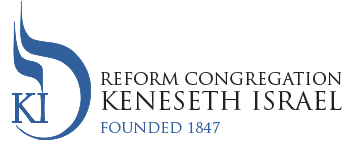Documentary evidence reveals that Jews have lived in Prague since 970 C.E. By the end of the 11th century, a Jewish community had been fully established. By the 12th century a ghetto is known, although, throughout the centuries Jews were not always confined there. By the early 18th century, more Jews lived in Prague than anywhere else in world and in 1708, Jews accounted for one-quarter of Prague’s population. Unfortunately, the golden age ended with the ascension of Empress Maria Theresa who expelled the Jews from Prague from 1745 to 1748.
Jews returned to Prague and conditions improved during the reign of Emperor Joseph II (1780-90) who issued the Edict of Toleration in October 1781. Jews were allowed to participate in all forms of trade, commerce, agriculture and the arts and were encouraged to build factories and school systems. They were even allowed to attend institutions of higher learning.
During the 19th century, Jews gradually became emancipated and temporary civil equality was granted under the law in 1849. The ghetto was abolished in 1852 and the Jewish section, Josefov, became a district of Prague. From the 1830s to the 1870s, Jews began to adopt the German language and assimilated German cultural patterns. Following the 1870s, however, the growth of Czech nationalism increased the level of antagonism felt by the Jews. By the last quarter of the 19th century, a network of Jewish institutions dedicated to Czech-Jewish acculturation emerged; however, not all Jews supported them - some remained faithful to German language and culture, while others favored the new ideology of Zionism.
German was spoken widely among many members of the Prague Jewish community and continued to be taught despite the tensions with the Czech-Jewish nationalists. During the first decades of the 20th Century, German-speaking Jews in Prague produced a large body of internationally acclaimed literature. The most famous of these writers were Franz Kafka, Max Brod and Franz Werfel. This is the last generation of writers and intellectuals in Prague before the outbreak of World War II.
On March 15, 1939, Germany occupied Czech lands. At the outbreak of World War II, over 92,000 Jews lived in Prague, almost 20 percent of the city’s population. Prague was one of the largest Jewish communities in Europe. At least two-thirds of the Jewish population of Prague perished in the Holocaust.
Besides the main building, the Jewish Museum rents the Old Jewish Cemetery, the Pinkas Synagogue, the Ceremonial Hall, the Klausen Synagogue, the Maisel Synagogue and the Spanish Synagogue from the Jewish Community to display items belonging to the museum.
Of the remaining Prague synagogues, the Spanish Synagogue and the Old-New Synagogue (the oldest still existing synagogue in Europe) are the most famous ones. The Spanish Synagogue, which got the name for its impressive Moorish interior design, is the most recent one, built in 1868. The Old-New Synagogue is, on the other hand, the oldest active synagogue in Europe. It was built in 1270 in the Gothic style – one of the first Gothic buildings in Prague.
Also the Maisel Synagogue (from 1592), The Pinkas Synagogue (1535) and – the biggest one – The Klausen Synagogue (from 1694), are located in the Prague Jewish Quarter.
SOURCES FOR THE ABOVE:
Prague Jewish Quarter (Ghetto): Cemetery, Museum & Tours
Prague - Jewish Virtual Library
Prague Renaissance · World War II · Post-World War II
